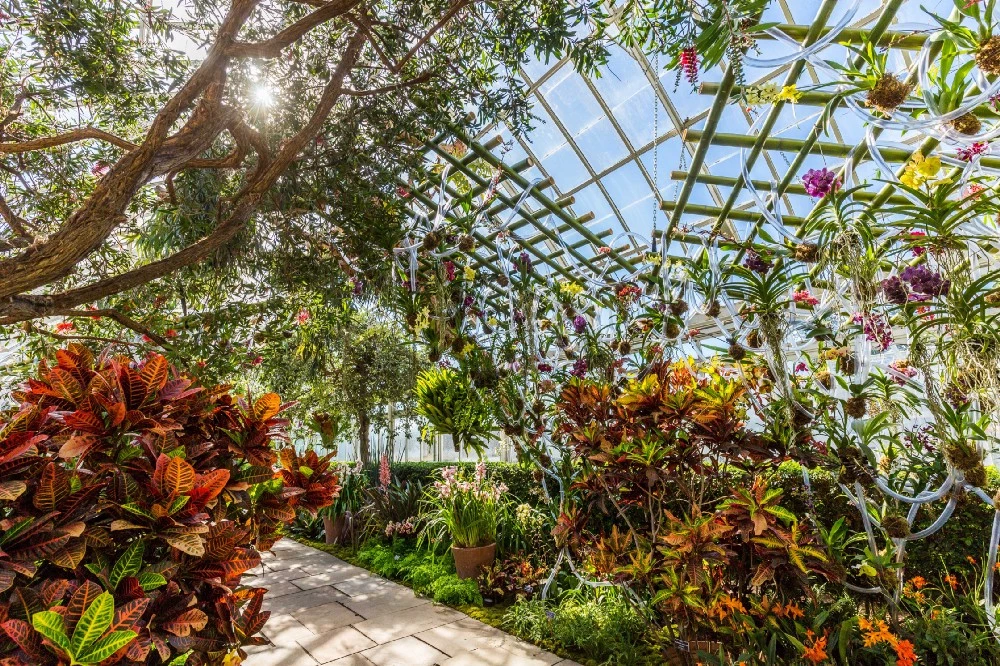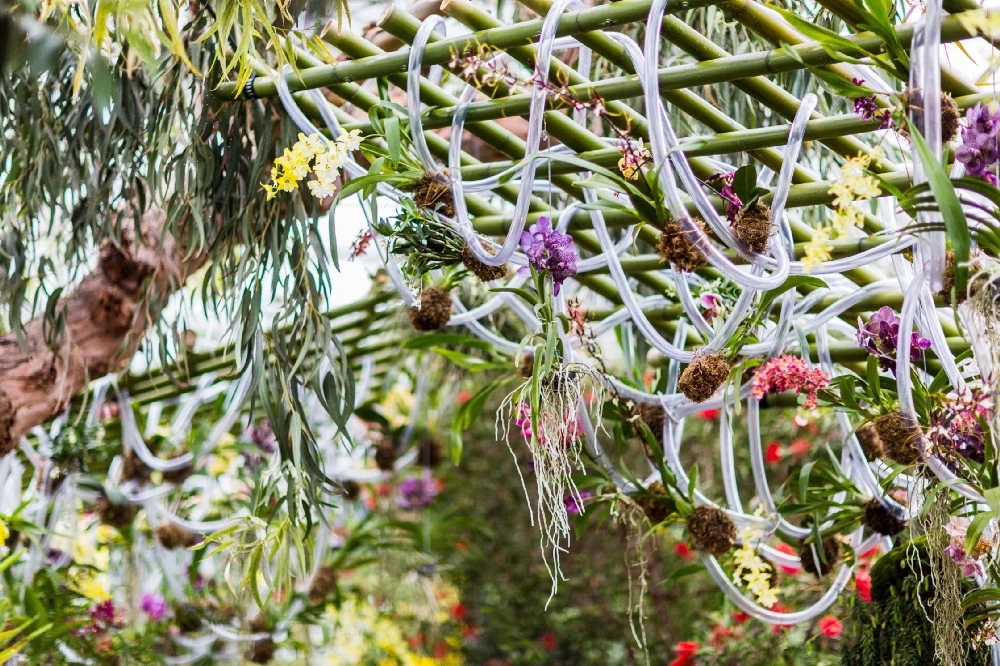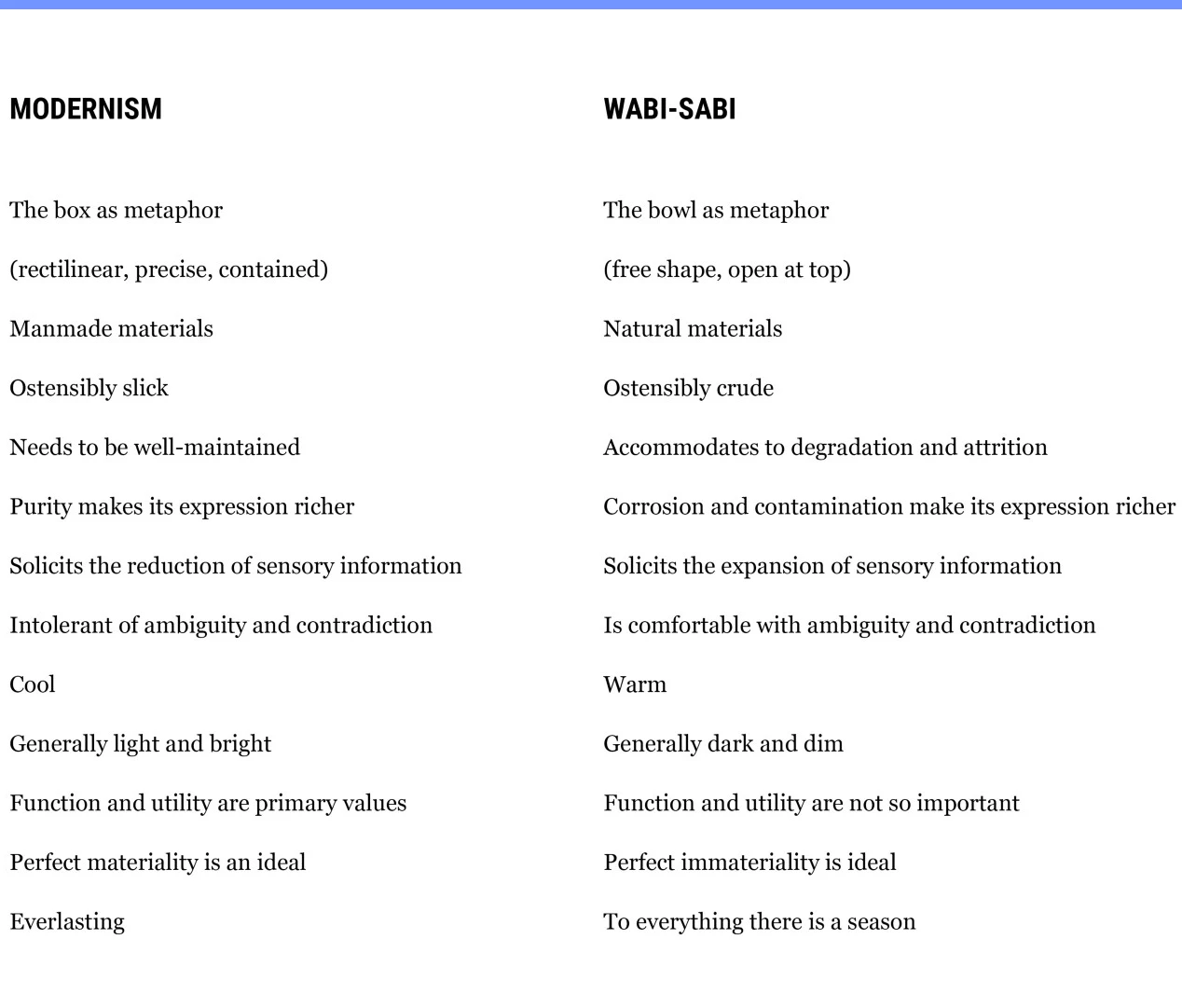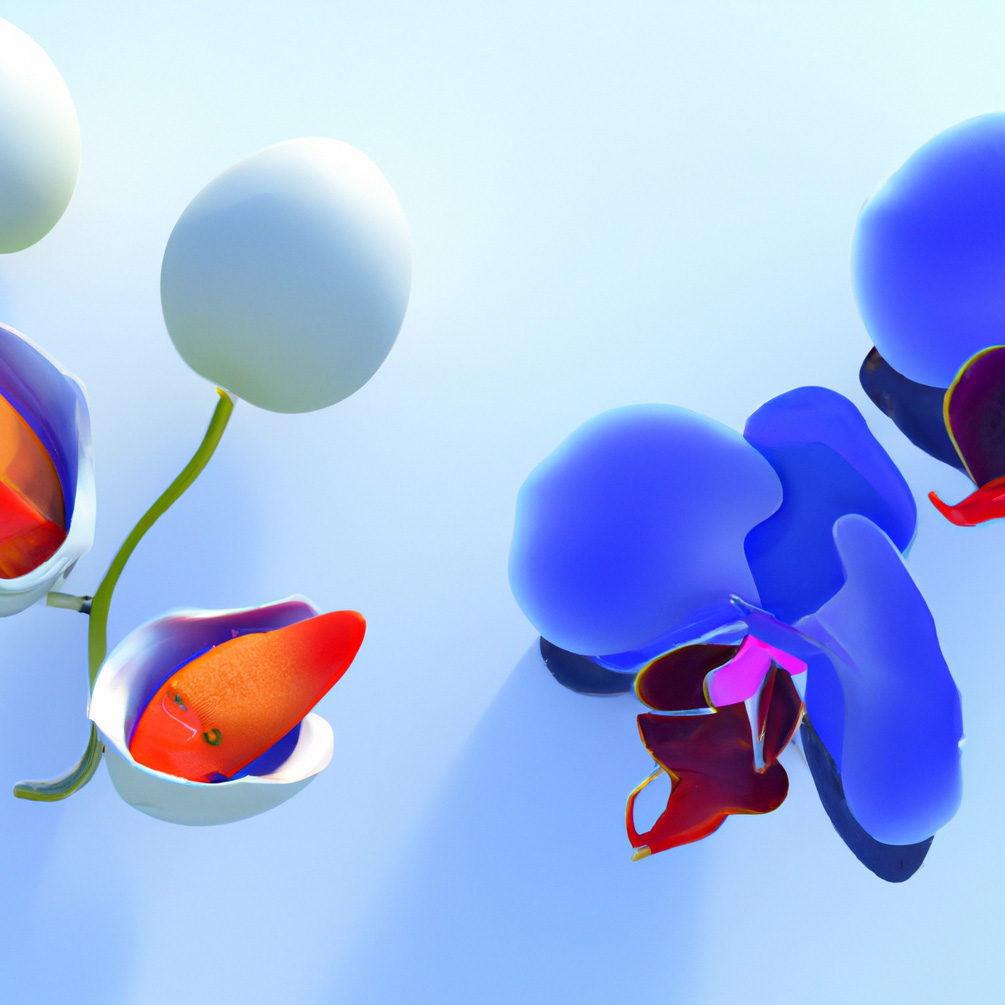We trekked through the woods, a family of six on our way to the Orchid Show at the New York Botanical Garden’s Conservatory. The kids ran down the trail, springing from rock to rock and trying to guess what sort of animal or flower they might see next. The forest we walked through was once home to the Lenape Indians, a tribe that first inhabited New Jersey, Delaware, Eastern Pennsylvania, and southern New York¹. It’s not too far of a stretch to imagine that tribe camping and hunting in the very woods we now walked; the largest remaining piece of New York State’s original primordial forest and a wonderful entryway from the east side of the Garden.
The Orchid Show is the work of Daniel Ost, the world’s leading floral artist and designer of the entire exhibit. Some have described the Belgian artist as “the Picasso of flower arranging.” Others have noted that to call him a floral arranger is to diminish his work. Instead, it is more fair to say that he is an artist who works with flowers. Regardless of how you classify Ost, you’ll find his work stunning.


We entered the Conservatory to the sight of an Ost sculpture. A massive tangle of transparent tubes suspended from the ceiling, like giant glass vines. The tubes were holding hundreds of orchids creating a giant cluster of color and life.
Ost spent time in Japan in the ’80s studying under tea ceremony master and floral artist Noboru Kurisaki. Under Kurisaki’s influence, Ost learned the philosophy and aesthetic of wabi-sabi. In the wabi-sabi mindset, there is an acceptance and celebration of the imperfect and impermanent. This mindset was prevalent throughout the exhibit, such as in the tangled composition of tubes.
WABI-SABI
I’ve thought about wabi-sabi often since I first came across the philosophy years ago. Trying to explain it, or even totally understand it, is a bit like trying to explain or understand love; it feels abstract and real all at the same time. It is philosophical, metaphysical, tangible, emotional, and self-referential. And the only way you understand it for sure is when you experience it. Wabi-sabi is both an ideal and an expression. Like any aesthetic sense, you can define it, but it’s best understood when you see or experience it.
In short, I tend to think of wabi-sabi as the beauty of imperfect: a set of principles and ideals that together celebrate the natural entropy of the ordered world and, instead of calling that entropy and decay ugly, celebrating it as a form of beauty.
Artist, architect, and aesthetic theorist Leonard Koren has done much to define and advance the ideas of wabi-sabi. In his book Wabi-Sabi for Artists, Designers, Poets, & Philosophers, he outlines the characteristics of wabi-sabi as compared to modernism:

What I find most compelling about the wabi-sabi philosophy is the impermanence of things and the acceptance of the inevitable. In fact, Ost’s Phaidon retrospective is subtitled “Floral art and the beauty of impermanence.” In this philosophy, we see beauty being generated by a force outside of the object itself. So what is that force?
The question begs a spiritual answer. The ideals of wabi-sabi are inherently spiritual, and I think this is what draws me into the philosophy. The perspective is more than finding something “pleasing” to my eye; instead, it forces me to look beyond the object and to see that beauty is achieved not only because of what the object is but because of what the object isn’t².
WABI-SABI IN OUR WORK
At FiveStone, the philosophical principles of wabi-sabi apply to our work more than the visual representation of those principles. We are, after all, paid to do things within a visual aesthetic that is appropriate for the audience. But this doesn’t mean that our work isn’t shaped by our philosophies.
The parts of wabi-sabi that inform FiveStone’s worldview manifest themselves in two primary ways: impact and transcendence.
Lasting Impact
Wabi-sabi celebrates the impermanence of the object and natural entropy. We understand this, too. However, most of our work has a short shelf life as methods, trends, and strategies change. Much of what we do doesn’t exactly live inside this aesthetic.
However, we do want our work to last in another way — through its impact. While the physical and digital artifacts of our work may not last long enough to entropy, we believe that the outcomes of our work last for generations.
As an example, when we work with Hearing First to help children born deaf or hard of hearing reach their full potential, we do so with the belief that if the children we serve find success, the impact of our work will continue for generations. This success will impact their children and their children’s children.
Pointing towards transcendence
A philosophy of beauty suggests that beauty always points to something beyond itself; challenging the person encountering the beauty to ask, “What am I really seeing?” It forces the viewer to look beyond the object. This holds true in wabi-sabi. The physical appearance suggests that something else is going on and impacting the object. In this case, the viewer is challenged to wrestle with “the thing behind the thing.”
At FiveStone, we constantly ask ourselves, “What is our work pointing people toward? What are we forcing people to wonder about?”
Our hope is that it is something bigger than “the thing” itself and instead something that generates positive impact by challenging norms. For example, when you look at our work within the adoption community, we hope you don’t see only kids that need homes. Instead, we hope you wonder what compels adoptive families to open up their homes in the first place.
Wabi-sabi forces us to defamiliarize ourselves with what we are seeing and instead find new ways of encountering an object and the world around us. At FiveStone, we do this through our work and in our work, creating lasting impact and a transcendent perspective.
Walking through the woods that day to see the Orchids our minds raced with the what we saw. The kids noticed the large striations in the rock formations, evidence of past glaciers. We talked about the bugs and the river and the downed trees. And, in all of it we dug deeper looking towards what caused it to happen.
On that trail we saw things new, we asked questions, and searched for something beyond what we could see with our eyes.
¹ https://www.nytimes.com/2011/11/04/arts/where-the-lenape-trod.html
² Concepts taken from On Beauty and Being Just by Elaine Scarry.
The FiveStone team is now part of Whiteboard.
Since 2001, we have worked with some of the most courageous organizations on the planet. We've walked alongside these organizations by offering strategy, branding, and campaigns to bring about positive change in the world.
As we think about how we might continue to live out our mission—“amplifying positive impact”—over the years ahead, we are excited to announce that we are joining forces with Whiteboard.
Whiteboard is an award-winning creative agency and Certified B-Corp. Like FiveStone, they believe in the power of Design to make the world a better place. It is clear to us that by bringing together the power of our strategic focus with their strong digital offering, we can truly build—as Whiteboard says—”the world that ought to be.”
We are thrilled to join Whiteboard and cannot wait to bring Whiteboard’s full suite of services and offerings to all our partners.
See more about Whiteboard here or visit the archived FiveStone site here.
